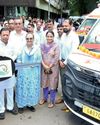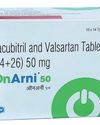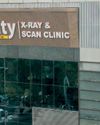Don’t miss signs which indicate a surgical or interventional radiological intervention

When a patient of suspected abdominal trauma presents to the emergency room, he is managed by initial evaluation, resuscitation and stabilisation as a part of the primary survey. Radiographs of chest and pelvis and FAST (Focussed assessment with sonography in trauma) ultrasound are done during the primary survey itself. FAST ultrasound is done to detect free fluid in the peritoneal cavity which in this setting as considered as hemoperitoneum. Gray scale ultrasound has been shown to be ineffective in ruling out abdominal organ injuries and hence is not used for the same. The FAST can be extended to chest to detect hemothorax and hemopericardium.
If the patient does not stabilise after the initial resuscitation, then often surgical management is done by the form of diagnostic laparotomy or thoracotomy without any further imaging. But if the patient is hemodynamically stable, then he is subjected to contrast enhanced CT scan of chest and abdomen. At our level-1 trauma centre, all patients who are positive for abdominal fluid by FAST examination are subjected to CT scan. Patients with a dangerous mechanism of injury including fall from a significant height, high speed motor vehicle collision etc are also subjected to CT scan even if they are FAST negative. We consider chest and abdomen together as part of torso trauma and image them together in all patients suspected of either chest or abdominal trauma.
This story is from the {{IssueName}} edition of {{MagazineName}}.
Start your 7-day Magzter GOLD free trial to access thousands of curated premium stories, and 9,000+ magazines and newspapers.
Already a subscriber ? Sign In
This story is from the {{IssueName}} edition of {{MagazineName}}.
Start your 7-day Magzter GOLD free trial to access thousands of curated premium stories, and 9,000+ magazines and newspapers.
Already a subscriber? Sign In

KIMSHEALTH launches electrophysiology lab with 3D mapping
'ENSITE X' is the first of its kind in Kerala and the third in India enabling precise identification, mapping, and targeting the abnormal electrical activities in the heart.

Molbio boosts Goa's healthcare system with CSR initiatives
The company has donated four state-of-the-art Advanced Life Support (ALS) ambulances and two hearse vans for National Highway emergencies

USV introduces affordable heart failure medication
This cost-effective option addresses the rising cases of heart failure in India, offering lifesaving care to millions of patients who need it the most.

City Imaging & Clinical Labs to expand services to 50 hospitals
The company is currently associated with 10 hospitals, providing comprehensive lab management services, including 24/7 in-house phlebotomy and lab testing.

Oncare raises $1 million in seed funding, to set up 10 units
Oncare has raised $1 million in a seed funding round led by Huddle Ventures. It plans to deploy the raised capital to expand its operations to 10 new centers.

Nutrabay forays into Ayurvedic supplements market with Shilajit
Nutrabay's aims at gaining market share from the existing ayurveda supplements market with a distinctive product proposition and education about the benefits of Shilajit.

INDIA'S PREPAREDNESS ON HEALTHCARE-ASSOCIATED INFECTIONS: A GROWING FOCUS ON PATIENT SAFETY
The country's diverse healthcare landscape necessitates a flexible and multifaceted approach to infection control that can be adapted to various settings and resource levels.

TRANSFORMING CARDIAC SURGERY: HOW AI IS REVOLUTIONIZING PATIENT CARE AND OUTCOMES
Dr. Swarup Swaraj Pal shared his insights on the current state and future prospects of AI in cardiac procedures.

BEYOND THE LAB: THE CRITICAL ROLE OF LOGISTICS IN INDIA'S PHARMACEUTICAL INDUSTRY
As India continues to expand its role in the global pharmaceutical market, the importance of a robust, reliable, and innovative logistics infrastructure cannot be overstated.

LIFESTYLE DISEASES IN CHILDREN: A WAKE-UP CALL FOR A HEALTHIER GENERATION
In today's fast-paced world, children face an unexpected enemy: lifestyle diseases. Conditions like obesity, Type 2 diabetes, and hypertension are now affecting our youth. What's causing this shift, and how can we combat it?